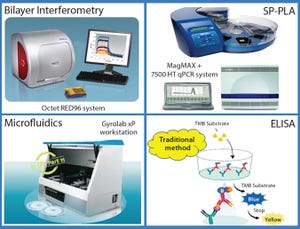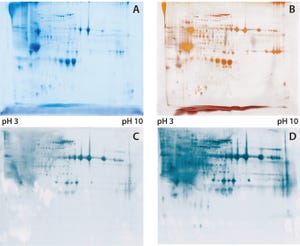Emily Shacter, PhD,
Consultant
, ThinkFDA LLC
Email Emily
This is a transcript from a Q&A interview with Emily Shacter, PhD, Consultant, ThinkFDA LLC (former FDA Scientist and Regulator).
We will be talking today about the CMC Forum that was published back in 2005. We are revisiting it in the magazine to specifically update our understanding of how to maintain process control; understanding your process.
In general, how do you feel the discussions in the four-part paper from 2005 has held up after 10 years?
Emily: I think they have held up well. We spent many years developing principles through which to regulate protein products so what we discussed back in 2005 was all very well considered. Companies have also spent decades figuring out how to manufacture and control protein products. By the time we got to the 2005 forum where we talked about control of process- and product-related impurities, the field had already come a long way. There are certain details that have changed over the past decade – and w...
One of my ongoing projects is to revise our author guidelines for better presentation online. Most publications have formal house-style guidelines to ensure clear and accurate communication. Editors are not immune from making mistakes, but as a reader, I distrust the accuracy of information in text that is (overall) sloppily edited. It is like not wanting to eat in a restaurant with a dirty kitchen. How can I trust the quality of the food? But styles can become outmoded, and they do change based on frequency of use. Here are a few examples of BPI’s approaches to determining style — why we edit your manuscript the way we do.
Formal style guides
are developed for specialty audiences. But BPI’s manufacturing audience includes scientists, academics, engineers, regulators, quality officials, IT managers, IP attorneys, and business managers around the world. We default to the
ACS Style Guide
because it addresses most questions we encounter. We refer to
Webster’s Third International Dictionary
and the nicel...
Niche Disease: Soft-Tissue Sarcoma (STS)
by Cheryl Scott
Cancer comes in two forms: the more common carcinoma form (of epithelial origin) and the less common sarcoma form. Sarcoma cells are mesenchymal in origin. Soft-tissue sarcomas are cancers of tissues such as fat, muscle, nerves, tendons, the lining of joints, blood vessels, or lymph vessels. Because there are at least 50 different types of STS, it is more accurately described as a family of related diseases rather than a single disease.
STS tumors are described in reference to the type of tissue that they most closely resemble (e.g., osteosarcoma resembles bone, chondrosarcoma resembles cartilage, and liposarcoma resembles fat). Some do not look like any type of normal tissue and are thought to come from stem cells.
Epidemiology:
About 60% of the dozens of STSs begin in an arm or leg, 30% start in the torso or abdomen, and 10% occur in the head or neck. Children and adults both can develop these tumors. STS is more rare in adults (~1% of all adult ...
COMPOSITE BY CHERYL SCOTT USING IMAGERY FROM GRAPHIC STOCK (WWW.GRAPHICSTOCK.COM)
When the US Food and Drug Administration (FDA) inspects your company’s biomanufacturing facility, investigators use the FDA Form 483 to record observations and findings (
1
). Such inspections typically review all good manufacturing practices and good laboratory practices (GxP) quality systems documents. If those investigators find compliance issues, they deliver a summary of their observations and findings using a Form 483, a copy of which will be provided to your company at the end of the inspection visit.
How to Respond An FDA Form 483 is issued to a firm’s management at the conclusion of an inspection when investigators have observed conditions that in their judgment may constitute violations of the US Food, Drug, and Cosmetic (FD&C) Act and related acts. FDA investigators are trained to ensure that each observation noted on a Form 483 is clear, specific, and significant. The form’s language states each observation witho...
To monitor the control and consistency of products derived from biological systems, a broad array of analytical methods are used for biopharmaceutical release and stability testing. These methods include both classical and state-of-the-art technologies as well as new technologies as they emerge over time.During the life cycle of a product, several reasons can arise for making changes in existing analytical methods: e.g., improved sensitivity, specificity, or accuracy; increased operational robustness; streamlined workflows; shortened testing times; and lowered cost of testing. Note that replacing an existing method is not the same as adding a new method to a release or stability test panel. An added method has no previous data sets, so there is nothing to be “bridged.”
But an existing method is tied to the historical data sets it produced (e.g., for Certificate of Analysis tests) and may still be producing (e.g., for ongoing stability protocols). Thus, significant changes in the method can create a substa...
Introduction by Cheryl Scott
The CMC Strategy Forums focus on relevant chemistry, manufacturing, and controls (CMC) issues throughout the life cycle of a therapeutic and thereby foster collaborative technical and regulatory interaction. Forum chairs share information with regulatory agencies to help them merge good scientific and regulatory practices. Outcomes of forum meetings are published in BioProcess International and on the CASSS website (www.casss.org). This process is meant to help ensure that biopharmaceutical products manufactured with advancing technologies in a regulated environment will continue to be safe and efficacious.
This new special report series highlights a major subject area that has been covered over the first 10 years of the CMC Strategy Forum series: process-and product-related impurities. Appearing quarterly throughout 2016, these inserts will reprint four original articles along with updated discussions of their subject matter. We begin this month with a general overview of pro...
Figure 1: Host-cell protein and leached protein A analytical technologies
Getting biologic drugs through development and into clinical proof-of-concept studies quickly and efficiently is critical for success in the biopharmaceutical industry. Implementing high-throughput approaches to both upstream and downstream process development is increasingly helping companies stay competitive. Innovative and highthroughput analytical technologies are needed to support rapid process development. The study reported herein focuses on innovative immunoassay platforms for impurity-removal monitoring of both host-cell proteins (HCPs) and leached protein A.
HCPs come from host cells during cell culture production. Their compositions and amounts in final drug products depend highly upon multiple factors, including the expression system, culture conditions, and purification process. Removal to safe levels during downstream purification is imperative to prevent adverse clinical effects. Immunogenicity, a critical adverse eff...
One of the most common posttranslational modifications of eukaryotic proteins is glycosylation. Glycosylation of proteins can affect many biological activities. For therapeutic glycoproteins, it can modify biological activity, targeting, trafficking, serum half life, clearance, and recognition by receptors (
1
,
2
). For such reasons, biomanufacturers must monitor and characterize the glycosylation patterns of their recombinant therapeutic proteins (
3
,
4
).
Therapeutic proteins have two main types of glycosylation: N-linked glycans and O-linked glycans (
5
). Attachment of an N-glycan starts in the endoplasmic reticulum (ER), where a core nascent glycan is linked through the side-chain amide nitrogen on specific asparagine residues of a protein at sites that have the sequence N
X
S/T, where
X
can be any amino acid residue except proline. N-glycans are trimmed and further modified as a glycoprotein transits through the ER and Golgi apparatus. Host cell and cell culture conditions can alter the type o...
Host-cell proteins (HCPs) constitute an inevitable impurity of biopharmaceutical products originating from recombinant-cell culture. HCPs are a heterogeneous mix of different proteins, their specific characteristics depending on the kind of organism used as an expression platform, on the “destination” of the expressed recombinant product (extra- or intracellular), and on the corresponding purification approach (
1
–
3
). Contamination of a final drug substance with residual HCPs could lead to immunogenic reactions in some patients who receive the drug product (DP). So a reliable method for identifying — and quantifying — HCPs is an integral component of biopharmaceutical purification processes and quality specification of a final drug product.
Generic protein-detection methods such as total protein stains are insufficiently sensitive, especially in the presence of a great excess of recombinant product. Tscheliessnig, et al. overviewed methods for HCP detection, classifying them into immunospecific (immuno...
In traditional sequential chromatography, columns are run as separate entities. The process requires significant hands-on time and constant manual intervention. By contrast, automated chromatography technology provides the same results more efficiently and reliably and frees researchers to focus on other tasks, thereby shortening protein purification times from days to hours.
For drug discovery, purifying protein samples is required to generate enough materials for research experiments. But the process is complex and time consuming. It involves repeated single-column purifications, careful analysis, and sometimes dialysis to ensure that conditions are right for the next column. Then, scientists must take their samples to the next column and begin the process anew.
Automating that purification process such that the eluate of interest from one column is shuttled automatically to the next column frees researchers from need frequent engagement with actual purification processes. An automated system can reduce...
Life-sciences markets develop in their own way, but one aspect they all have in common is the unpredictability of their growth. Not only are local economies unpredictable, but so are companies and their needs. Driven by competing pressures to seek new markets and new innovations while operating more efficiently, biopharmaceutical companies are increasingly setting their sights on new horizons abroad. Those investments are not without risks, however. Real estate is at the core of overseas expansion, and that’s where it can get tricky.
Got 20 Years?
Timing of a drug market’s path to profitability is highly variable. Got 20 years? JLL’s fourth annual
Life Sciences Outlook Report
(www.us.jll.com/united-states/en-us/Documents/Life-Sciences/JLL-US-Life-Science-Outlook-2015.pdf) estimates that it could take that long for some developing markets to deliver real consumer buying power for biopharmaceutical products and medical devices. In 2015, China’s economic growth trajectory made headlines for its dramatic de...












